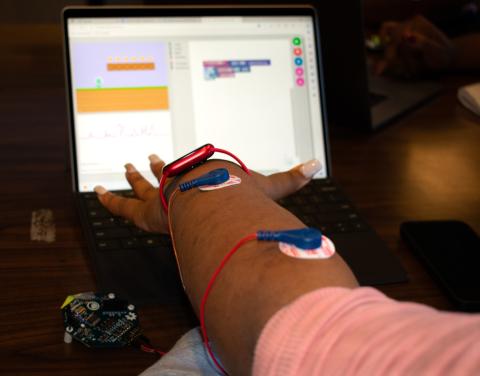Body
Image

Next Generation Physiological Interfaces
Relatively little research exists on the use of experiences with physiological sensors to support STEM education. In this work, we draw on techniques from physiological computing and computer science education to explore novel ways to build students' computational thinking skills. Learning barriers related to physiological expressions and physiological design may be less common with EMG-based (muscle) activities in comparison to EEG (brain) activities. Physiological design events seem to be highly connected with the "incremental & iterative" computational practice.
Pillar 1: Innovative Use of Technologies in Learning and Teaching
This project explores novel technologies such as brain and muscle sensors. These sensors are paired with visual programming environments to provide students with hands-on experiences with measuring electrophysiological data. Students also design simple real-time muscle- and brain-computer interfaces.
Pillar 2: Partnerships for Career and Workforce Preparation.
This project involves partnering with collaborators from the University of Alabama's School of Nursing to explore ways to build a pipeline of medical professionals from rural Alabama.
Pillar 3: Strategies for Equity in STEM Education
This project focuses on engaging students from rural Alabama with novel interactive sensor-based technologies.

Discipline(s)
Computer and informational technology science
Target Gradespan(s)
High school (9-12)
Target Participant(s)
Youth / students
Project Setting(s)
Informal Education
Category
Developing and Testing Innovations (DTI)